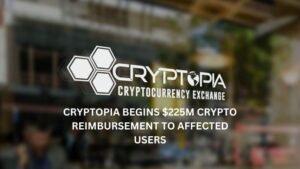Key Takeaways:
- Inflation in the US reached a new four-decade high in June as a result of rising prices for food, fuel, and rent.
- Over the past 12 months, core inflation, which excludes volatile food and energy prices, increased by 5.9 percent, a slower rate than in May.
- Prices increased by 1.3 percent monthly from May to June.
According to the Labour Department, consumer prices rose 9.1 percent over the previous year, setting a new high for inflation.Inflation in the United States reached a new four-decade high in June as a result of rising gas, food, and rent prices. This put additional pressure on households and likely sealed the Federal Reserve’s decision to raise interest rates significantly once again, leading to greater borrowing costs.
The rate of price growth is the fastest since November 1981 and is more than what analysts had predicted. There were numerous increases: According to a government survey, prices for rent, new and used cars, auto insurance, and healthcare all increased in June.
The continued price rises highlight the devastating effects that inflation has had on many households, with the cost of necessities rising especially quickly relative to typical salaries. Due to the fact that a disproportionate amount of their income is spent on necessities like housing, transportation, and food, lower-income and Black and Hispanic Americans have been struck particularly hard.
In response to ongoing inflation, Fed policy makers have already hinted at a second 75 basis-point increase in interest rates this month. In an effort to control inflation, Fed officials raised interest rates at the quickest rate increases since the late 1980s.
In order to combat a spike in inflation, the US Federal Reserve increased interest rates in June by 75 basis points, or 0.75 percentage points, the largest increase in 28 years. At a news conference held last month, Fed Chair Jeremy Powell stated and made it clear that the institution would hold off on rate increases until it had “compelling evidence” that inflation was dropping.
It has also been prophesied that rising interest rates would indeed be devastating for the cryptocurrency sector. In essence, higher interest rates signal a diminished interest in high-risk/high-reward investments like cryptocurrencies. Theoretically, this indicates that the price of cryptocurrencies will decrease at various intervals this year.
Given that the national average price of gas has dropped from an eye-watering $5 a gallon in mid-June to an average of $4.66 as of Tuesday, inflation is expected to have decreased in July.
Additionally, commodity prices and shipping costs have started to decrease. Increases in pay have stalled. Additionally, surveys reveal that Americans’ long-term expectations for inflation have decreased, a development that frequently portends more gradual price increases over time.
The Biden Administration’s political albatross and the Americans’ top economic concern now are both inflation.
Many analysts are concerned that the Fed’s efforts to control inflation may lead it to aggressively tighten lending even as the economy, by some metrics, slows down. A recession might start by the end of next year if borrowing costs rise significantly.
Spending by consumers has begun to decline, home sales are declining as mortgage rates rise, and industry output fell in May. However, consistently strong job growth indicates that the economy is still growing, with few signs of a looming recession.






